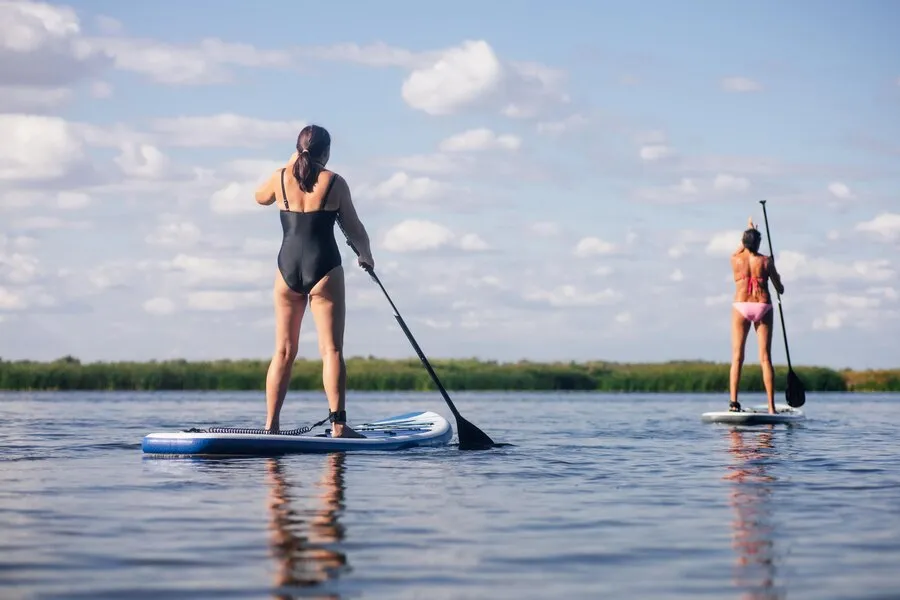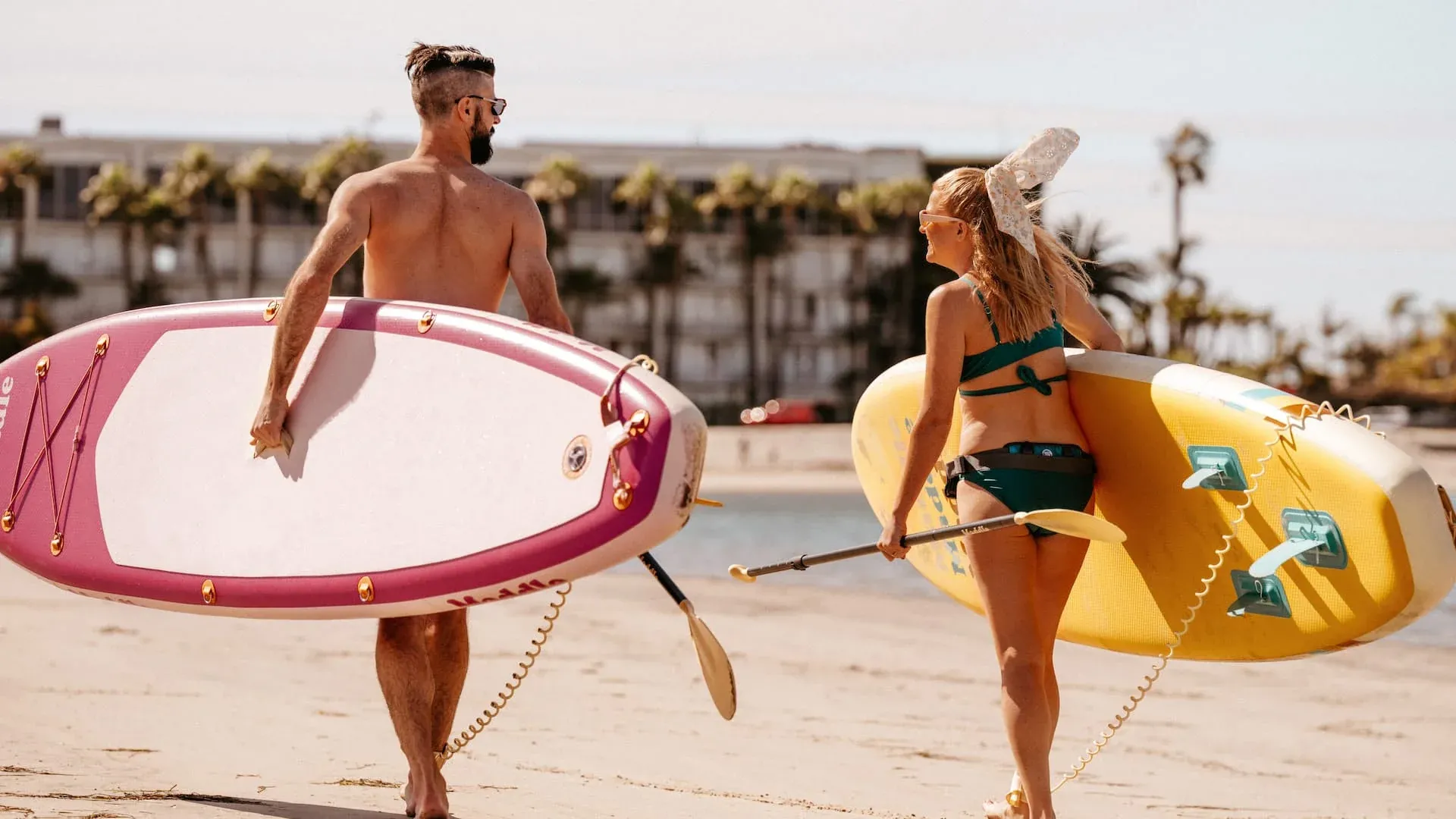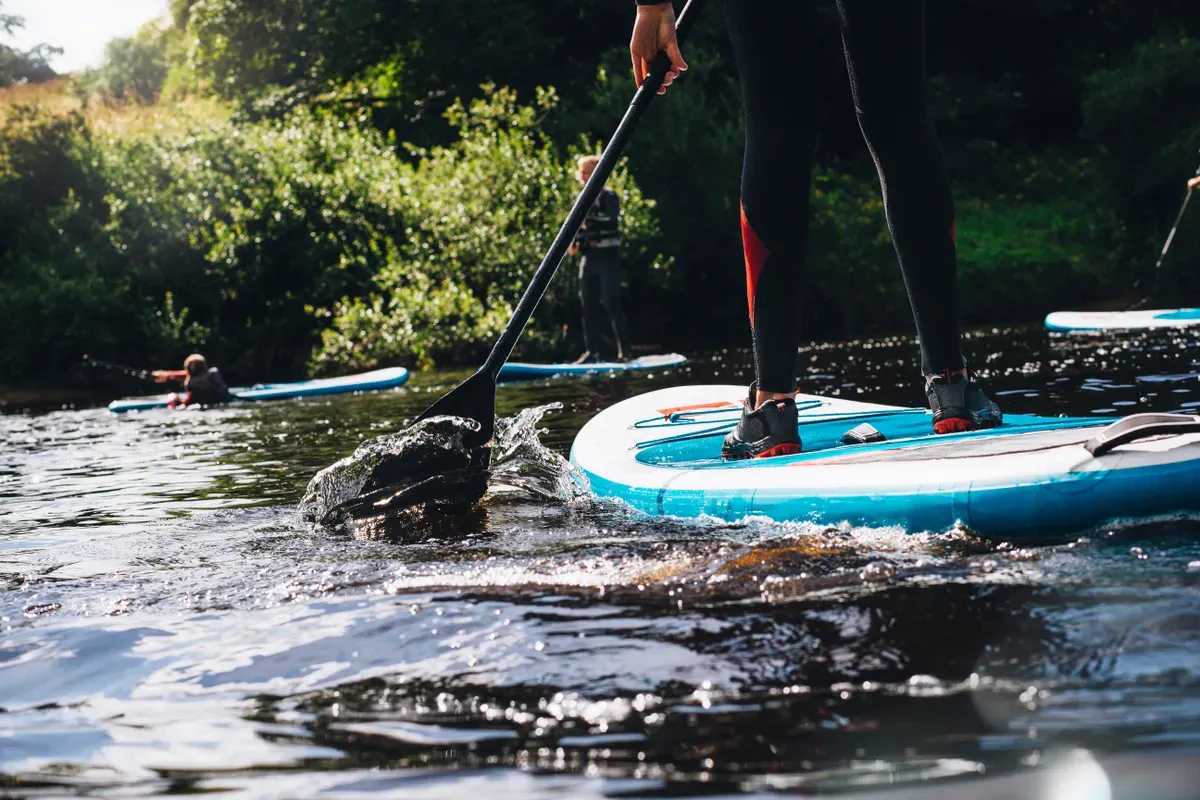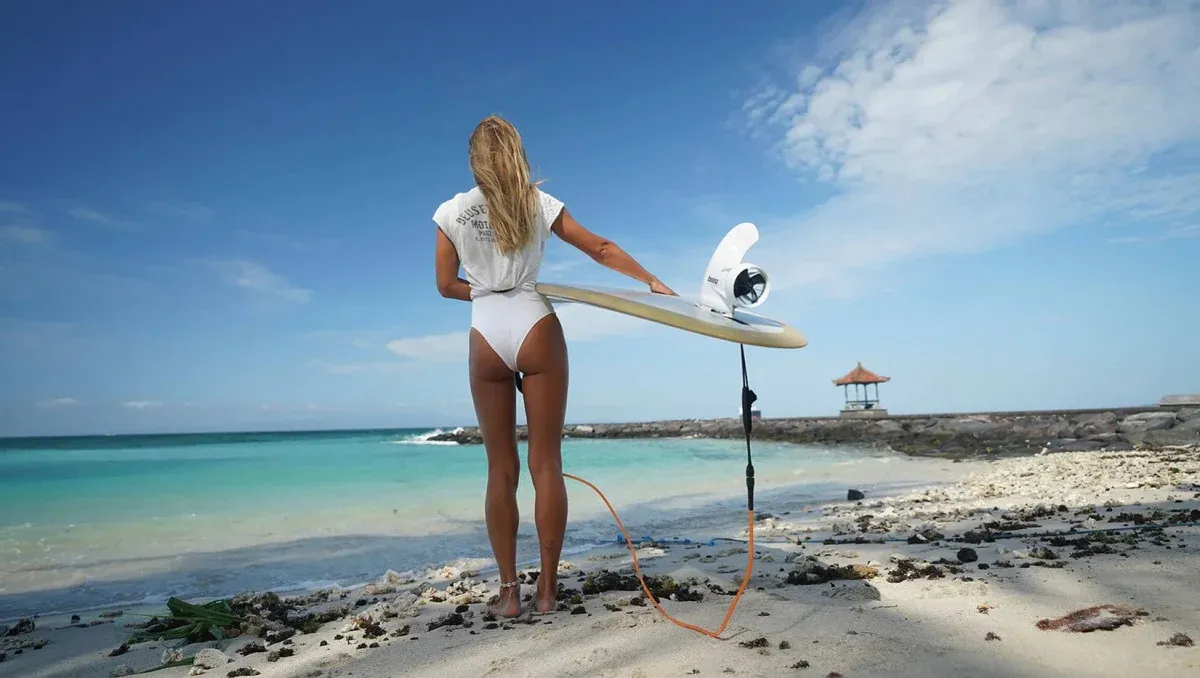How fast can you paddle board? While average paddle board speed of 3-4 knots (roughly 4 miles per hour) are typical for recreational paddlers, exceeding that mark is achievable. However, your SUP speed isn’t a fixed number. It’s influenced by a variety of factors.
This guide explores these key influences and equips you with practical tips to maximize paddling efficiency, helping you discover how fast you can fly on your SUP. So, let’s dive in to explore!
Factors Affect Paddle Board speeds
Paddle boarding offers a thrilling mix of exertion and glide, but maximizing your velocity involves more than just muscle. Besides knowing “how fast is a paddle board”, or “average speed of paddle board”, this section dives into the key factors influencing.
1. Experience
While physical strength certainly plays a role, paddle board speed isn’t solely determined by brute force. Novice paddlers often expend considerable energy with inefficient strokes, creating drag and hindering progress. Stand up paddle board speed applies the same rules. In fact, novice riders often ride at speeds lower than 3 MPH due to their lack of experience.

In contrast, seasoned paddlers have honed their form, maximizing power transfer and minimizing wasted effort. Imagine two individuals with equal fitness: the beginner flailing with jerky motions while the experienced paddler glides with smooth, controlled strokes. The latter will effortlessly outpace the former, demonstrating how technique amplifies physical capability.
Experience also fosters better board selection and environmental awareness. Beginners might choose wider recreational boards, sacrificing speed for stability. Experienced paddlers understand the trade-off, opting for narrower, faster designs when conditions permit.
Additionally, experience teaches how to read wind, waves, and currents, enabling paddlers to leverage these natural forces for increased speed or navigate challenging conditions efficiently.
2. Skill
While board design and fitness play crucial roles in paddle board speed, the often underestimated factor is skill. A skilled paddler can extract exceptional performance from an average board. At the same time, a beginner might need help to reach moderate speeds, even on a high-end model.

Imagine two paddlers on identical boards: a seasoned veteran and a curious novice. The veteran glides effortlessly, their strokes smooth and efficient, minimizing wasted energy. The novice, however, churns the water with erratic movements, their board rocking precariously. While the veteran maintains a steady pace, the novice tires quickly, their speed dwindling.
Skill manifests in various aspects. A strong core and proper form translate into powerful strokes with minimal strain. Efficient blade entry and exit angles maximize water propulsion. Reading wind and water conditions allows for strategic maneuvering, avoiding resistance and utilizing currents.
3. Physical Fitness
For the recreational paddler, a leisurely glide might be the goal. But for those seeking to slice through the water with speed, physical fitness becomes the silent engine propelling them forward. From core strength to endurance, various aspects contribute to unlocking your paddle board’s full potential.

Better core strength means more balance. Beyond the core, leg strength plays a vital role. Strong legs provide a stable platform for powerful strokes, minimizing drag and maximizing efficiency. Think of them as the anchors that keep you balanced and connected to the board.
Finally, endurance is the fuel that keeps you going. Just like a car needs gas, your body needs stamina to maintain speed over longer distances. Good cardiovascular health ensures your body delivers oxygen to your muscles efficiently, allowing you to sustain a faster pace for extended periods.
4. Board Type
Paddle boards vary in their speed capabilities. Flatwater SUPs, often utilized for activities like fishing and yoga, tend to be larger boards, which may limit their speed. While they can be used for touring and racing, they aren’t primarily designed for high-speed performance.
In contrast, boards specifically designed for racing and surfing excel in speed. These boards are narrower and longer, allowing them to glide swiftly through the water. For instance, a typical flatwater SUP might reach speeds of 3-4 mph, while racing and surfing SUPs can achieve speeds ranging from 5 to 12 mph or more, depending on the skill of the rider and the board’s design.
5. Board Size
Paddle board size and speed go hand-in-hand, but it’s not just about bigger being faster. Striking the right balance is crucial for optimal performance. Imagine maneuvering a giant surfboard – speed takes a backseat to stability struggles.

The key lies in finding a size commensurate with your height and weight. Longer boards, typically exceeding 12 feet, offer superior glide and tracking, making them ideal for speed demons and long-distance journeys. Their narrower profiles minimize drag, slicing through the water with efficiency. However, these boards can feel cumbersome for shorter paddlers or those prioritizing stability.
Conversely, shorter boards, around 10 feet, are more maneuverable and easier to control. They excel in choppy waters and playful paddling, but their wider profiles create more drag, limiting their top speed.
6. Inflatable or Solid SUP
In 2015, International Surf Ventures, Inc. conducted a comparison between hard epoxy paddle boards and inflatable ones to determine which offered greater speed.
| Stroke Pace | 12’6 Inflatable SUP | 12’6 Epoxy SUP |
|---|---|---|
| Relaxed | 3.78 mph | 3.96 mph |
| Intense | 4.88 mph | 5.21 mph |
⇒ The epoxy SUP outperformed the inflatable SUP by a 6% margin in terms of speed.
However, both types of paddle boards offer unique advantages suited to various riding styles. If you’re a competitive racer aiming for higher speeds and better gliding on long routes, a hard board is the preferred choice. In contrast, inflatable boards are perfect for budget-conscious paddlers, enthusiasts of SUP yoga, or anyone dealing with the challenges of storing and transporting a larger epoxy board.
7. Wind
The wind plays a crucial role in paddle boarding, serving both as an ally and adversary. Gentle breezes, particularly those under 8 mph, are considered ideal wind for paddle boarding. They offer a refreshing push that aids in downwind journeys, enhancing the experience without overwhelming the paddler.

However, as wind speeds rise, the board transforms into a mini sail, pushing you off course and demanding more effort to maintain control. Experienced paddlers can leverage tailwinds to boost their speed.
Still, for beginners, even moderate winds (9-12 mph) significantly increase paddling effort. Strong winds (over 15 mph) create choppy waters, challenging balance and forward progress.
Therefore, wind awareness is crucial. Choose calm days for leisurely paddling, and if venturing out in windier conditions, opt for sheltered areas and adjust your route to minimize headwinds.
8. Water Conditions
Water conditions are a hidden influencer on paddle board speed, demanding adaptation from even the most seasoned paddlers. Calm, flat water offers the least resistance, allowing for effortless gliding and maximizing speed potential.

However, the board encounters increased drag from waves and currents as the water becomes choppy. Choppy waters necessitate more frequent strokes and adjustments, slowing you down.
Strong currents can further impact speed, requiring constant effort to maintain course. Tidal changes also play a role, with outgoing tides offering a slight speed boost while incoming tides demand extra effort.
9. Rider Size and Weight
Rider size and weight significantly influence paddle board average speed due to their impact on water displacement and board stability. Lighter paddlers generally have an advantage: they displace less water, creating less drag and allowing for more effortless gliding.
For example, a 120-pound paddler on a suitable board will likely outpace a 200-pound paddler on the same board. However, weight isn’t the sole factor. Taller individuals with longer limbs can generate more powerful strokes, potentially negating the weight disadvantage.
Additionally, heavier paddlers might benefit from wider, more stable boards that offer better control, especially in choppy conditions. Ultimately, the ideal combination lies in matching rider size and weight to the appropriate board dimensions and volume.
Average Speed of Paddle Boarding
Whether you’re a recreational paddler seeking a scenic tour or a competitive athlete aiming for peak performance, understanding average speeds can set realistic expectations and inform your training approach.

Recreational paddle boarding
How fast is a paddle board for leisure paddling? Recreational paddle boarders cruise leisurely, it typically has the average paddle board speed mph between 3.5 and 4.5 miles per hour. This comfortable speed allows for sightseeing, enjoying the scenery, and chatting with fellow paddlers.
While not focused on racing, it still provides a gentle workout. It covers good ground for exploring coastlines or calm waters. Still, factors like fitness level, board type, and wind conditions can influence your speed within this range.
Paddle boards for racing
In the adrenaline-pumping world of paddle board racing, speeds soar compared to leisurely cruising. Elite racers push 6-7 mph consistently, while experienced competitors hover around a speed paddle board of 5 mph. These impressive speeds are achieved through dedicated training, advanced board designs, and efficient paddling techniques.
Witnessing racers effortlessly slice through the water at such speeds is a testament to their dedication and skill. While recreational paddlers enjoy the journey, racers focus on every stroke, maximizing power and technique to achieve these impressive speeds.
How to SUP faster?
Conquering the water with speed on your paddle board requires a multi-pronged approach, where technique, equipment, and environmental factors all come into play.

Here are some key considerations to elevate your SUP game and go fast on your paddle board:
- Harness the Elements: Choose calm days with minimal wind and flat water. Gentle breezes can aid downwind journeys, but strong winds become adversaries, demanding extra effort. Choppy waters create drag, so seek sheltered areas whenever possible.
- Dress for Speed: For optimal speed, prioritize streamlined attire. Choose lightweight, form-fitting garments that minimize wind resistance. Avoid baggy clothing, as each unnecessary flap acts as a miniature drag chute, hindering your progress.
- Board Choice Matters: Thinner, narrower boards, while demanding more stability, slice through the water with less resistance than wider, inflatable options. Choose a board that balances speed with your comfort level.
- Start Strong, Sustain Steady: Initiate your paddle with a solid burst to establish momentum, then transition to a steady, controlled pace. Frequent bursts of energy deplete your reserves quicker than a consistent, rhythmic paddling technique. This sustained approach optimizes efficiency and allows you to cover greater distances with less fatigue.
- Be Mindful: Focus on executing smooth, powerful strokes with proper blade angle and engaged body rotation for maximum efficiency. Be present in the moment, feeling the water and adjusting your movements as needed. This mindful approach unlocks your full potential and fuels a truly connected, efficient ride.
We have a better solution for you!!
Your paddle boards can now incorporate innovative electric fins that can enhance your SUP speed. These fins offer up to 5 mph propulsion, powered by a motor capable of generating 20 pounds of thrust and consuming up to 800W. The battery provides a runtime of between 60 and 90 minutes, allowing you to cover more ground or tackle challenging currents with greater ease.

While paddle board speed can vary greatly depending on board type, paddler skill, and conditions, understanding average speeds can offer a helpful benchmark. Remember, these are just averages; exceeding them is undoubtedly possible with dedication and practice.
When shopping for paddle boards online, be careful. Buy from Boost Fin’s official website or authorized dealers to avoid scams. Stay informed for a secure paddleboarding experience. Feel free to ask questions about paddle boards and surfing in the comments; we’re here to help.


Share:
11 Surfing Exercises to Improve Your Surfing Skill in 2024
Healing on the waves: my post-injury surfing experience with Boost Fin